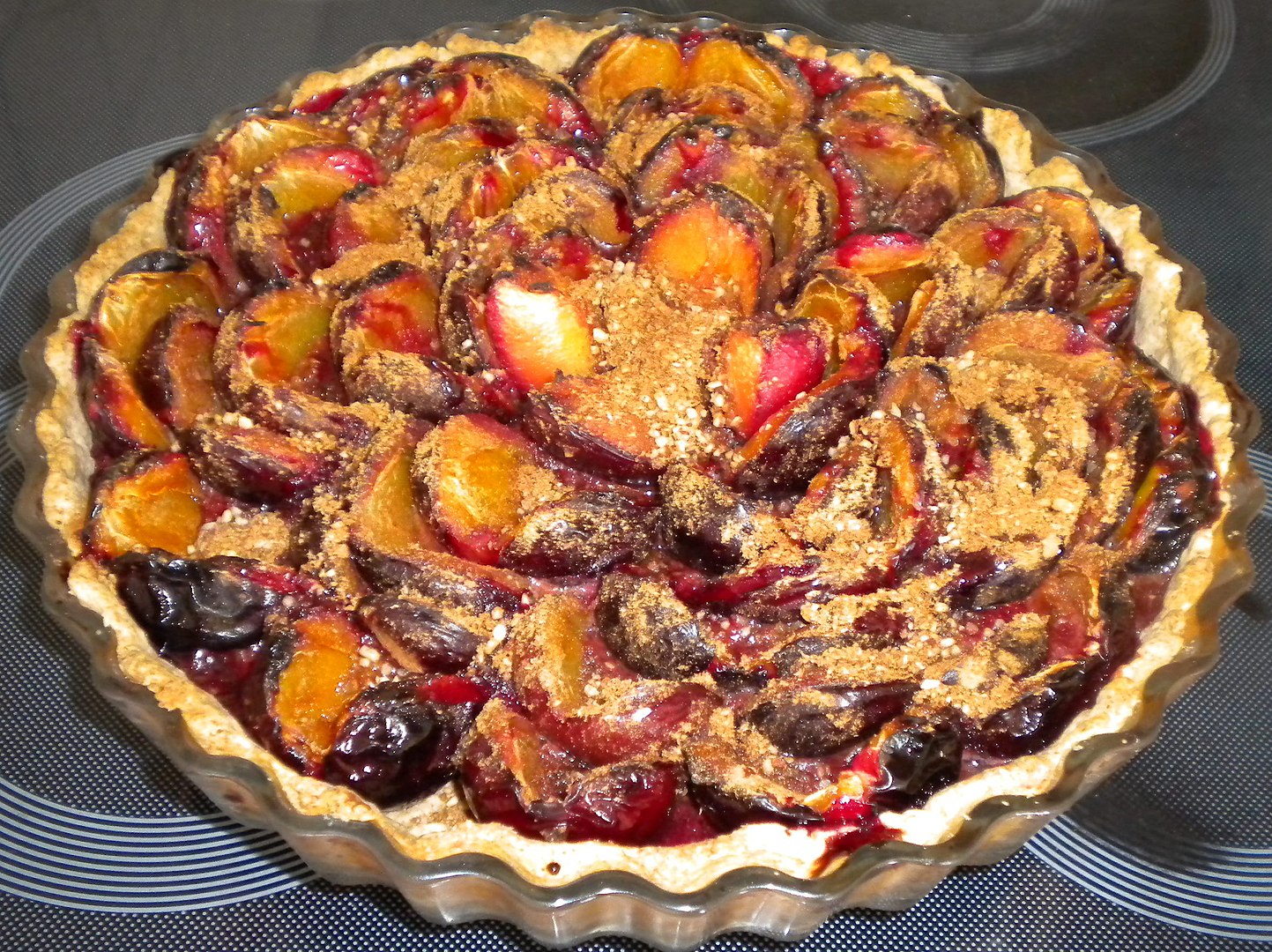Guess where plum or prune tart is eaten today? 🥮
It’s in Geneva, Switzerland for the yearly celebration of the Genevan Fast, Jeûne Genevois or Genfer Bettag. Unlike the Eidgenössische Dank-, Buss- und Bettag 🙏 in the rest of Switzerland which falls on the third Sunday in September, Jeûne Genevois is celebrated on the Thursday after the first Sunday in September. It is a holiday (in the Geneva canton), so all stores, banks, schools etc. are closed, no festivals, music events or other events take place.
Traditionally a tarte aux pruneaux (plum cake or tart) is eaten on the Genevan Fast Day as well as on the Dank-, Buss- und Bettag in the rest of Switzerland. It can be made the day before so that on the actual holiday you have more time to thank, atone, and pray. This tradition goes back to the beginning of the 20th century.


A bit of history
The church during hard times, like a war or the plague, would often set a day for their congregation to fast and atone. And this is also the origin of the Jeûne Genevois, and in the end it is a day of remembrance.
It goes back to the French Wars of Religion between the Catholics and the Huguenots, a group of Calvinist Protestants, between the years 1562 and 1598. In many sources I found that the first fast day in Geneva took place in October 1567 in response to the repression the Huguenots faced in Lyon, France, at the time. Sometimes a massacre of the Protestants mentioned. However, while reading about the Wars of Religion I couldn’t find a specific event in Lyon at the time that would have triggered a fast by the Swiss Calvinists to show their friendship with the French Huguenots.
The massacre of French Calvinists that is most known and prominent is of course the St. Bartholomew’s Day Massacre of 1572. 🩸🗡🩸 On August 18th, the king’s sister Margaret 👰 married the Protestant Henry III of Navarre and therefore many aristocratic and wealthy Huguenots were in Paris. On the eve of St. Bartholomew’s Feast Day, August 23rd, Huguenot leaders and politicians were killed. The slaughter didn’t stop there or at wealthy Protestants but spread over the next several weeks from Paris to other parts of the country, to cities like Toulouse, Lyon, and Orléans. Maybe this is where the connection to Lyon comes from.

It is hard to estimate how many Huguenots died during the massacres, numbers vary between 5000 and 30,000. In some cities, the population of Protestants dwindled not because of their deaths, but because they converted to Catholicism or emigrated.
Maybe for us, it should be a day where we think about what connects us across different religions and why a separation of church and state is so important. Because the French Wars of Religion wasn’t only about religion, just like the crusade weren’t, just like the Thirty Years’ War wasn’t, it was about power, political and economic power.
Sources
- https://www.geneve.ch/en/what-geneva/discover-geneva-districts/geneva-through-ages/jeune-genevois
- https://www.swissinfo.ch/ger/adventskalender-2019_tuere-nummer-13–kanton-genf/45411764
- https://en.wikipedia.org/wiki/Je%C3%BBne_genevois
- https://livingingeneva.wordpress.com/2019/09/05/le-jeune-genevois-learn-more-about-this-holiday/
- https://www.geneve.ch/en/what-geneva/discover-geneva-districts/geneva-through-ages/jeune-genevois#
- ps://www.oikoumene.org/en/press-centre/news/jeune-genevois-a-201creligious201d-holiday-linked-to-the-history-of-geneva
- https://en.wikipedia.org/wiki/French_Wars_of_Religion
- https://www.washingtonexaminer.com/weekly-standard/the-bloodiest-church-in-europe
- https://en.wikipedia.org/wiki/St._Bartholomew%27s_Day_massacre
- https://www.youtube.com/watch?v=FjsEOACJlCI


